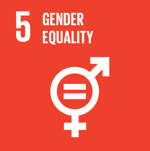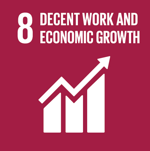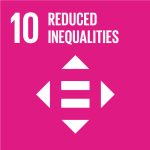Sustainable Intensification of Family Farming in Peru and Bolivia
 Peru
Peru
 Bolivia
Bolivia
Executive Summary
CIRNMA (Perú) and ALTAGRO (Bolivia) develop the CT "Family farming sustainable intensification in Peru and Bolivia" (ATN/RF-16677-RG), sponsored by FONTAGRO. The beneficiaries, 3000 rural students of the Altiplano, will be strengthened in Agricultural Technological Alternatives (ATAs), validated locally, via a Virtual Dissemination Platform (VDP). The VDP (www.cirnma.org) has 44 technical data sheets on ATAs, disseminated through 44 workshops. Between May and November 2019, the VDP was visited 1,739 times. 31% "downloaded" 40 ATAs 517 times and sent 111messages of interest. The 14 most downloaded ATAs show the need for alternatives that ensure "food for livestock" during the dry season (April–October), have potato "seed" (main crop), improve income and optimize water use in the face of climate change. The VDP also recorded 46 reviews (22% women) for 11 ATAs. With 187 students in Peru (44% women) from 3 schools and 326 in Bolivia (36% women) from 9 schools, 14 ATAs were prioritized and, based on them, 6 modules were installed. In addition, 3 students in each country replicated ATAs in their family systems. The experiences will be "uploaded" to the VDP. Regarding success stories in progress, in Peru, 10 students participated in the CREA Y EMPRENDE Contest and, with information from the VDP, managed to win. In Bolivia, a potato plot of 2,500 m2 has been installed, whose future, in addition to applying productive ATAs, is to create a Rotating Fund in solidarity with the School Boards. We have learned how, by organizing research results (ATAs) into a VDP, it is possible to disseminate them to students and strengthen their role as future farmers.
The technological solution
Agricultural technology transfer and dissemination using different methodologies, each with adequate technical foundation. However, their development is basically face-to-face, which limits the number of beneficiaries and raises costs.
This CT proposes to disseminate agricultural technology using a scaling methodology based on a virtual platform. That is, use virtual means offered by current technology to reach the largest number of beneficiaries. In addition, the knowledge and technological innovations to be offered are aimed at students (women and men) who come from households whose main activity is traditional agriculture in the Peruvian-Bolivian highlands. Thus, they can enhance their future productive capacity (new farmers) and have a better vision of the benefits of traditional Andean agriculture, which serves as a life support system.
Results
The participative scaling from the CT uses a VDP as a tool. With this we accomplished:
- The most downloaded ATAs: "alfalfa-forage" (106), "winter wheat" (31), "trout rearing" (26), "potato seed disinfection" (19) and "spray irrigation" (16); evidence of the need for alternatives to have "food for livestock" in the dry season; potato seed (main crop); improve income and water use in the face of climate change.
- In the baseline, 65% didn't know about ATAs. Using VDP, 22% of women commented positively on ATAs.
- Based on the VDP, 10 students participated in a National School Competition (Peru), becoming finalists ("Néctar de Izaño"). Another 68, created a Potato Solidarity Revolving Fund (Bolivia).
- With 187 students in Peru (44% women) and 326 in Bolivia (36% women), 5 modules based on 14 agricultural ATAs were installed. The result (July 2020) will be "uploaded" to the VDP, respecting credits.
- Six students apply ATAs to their homes. These are: Multiplication of native potatoes using sprouts, organic orchards, vegetable greenhouses, colored quinoa, cañihua ecotypes, organic bean, Clover + Rye Grass association, biol production and worm breeding.
Beneficiaries
Direct beneficiaries 3000 rural students (of both sexes) are direct beneficiaries in the Peruvian-Bolivian Altiplano. They will be the next generation of farmers. It is intended to strengthen their agricultural knowledge, with validated results in their area; through a Virtual Dissemination Platform (as a tool). This knowledge will be complementary to their educational training. By strengthening themselves with agricultural information, which is possible to incorporate into their production systems, these beneficiaries are trying to gain a new vision of their own agriculture that enables their personal and family development.
Indirect beneficiaries are families of traditional producers, university students and agricultural extensionist professionals who can use the VDP and available ATAs for dissemination.
Sustainable Development Goals





Project news
Participating Organizations
Executor
- Centro de Investigacion en recursos naturales y medio ambiente (CIRNMA) - Perú
Co-executor
- ALTAGRO - Bolivia
Graphics and data
Financing by country (in USD)





































